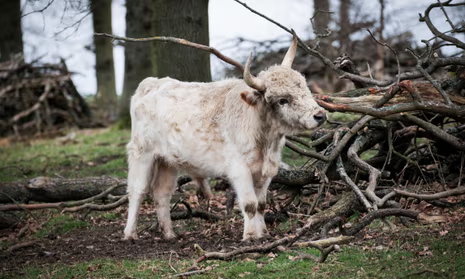Introduction to the White Coza Animal
Nature’s villains and aficionados fall in love with the White Coza Animal’s glimpse. The eye-catching white coat of this beatific animal has established it as a symbol of beauty. The White Coza is known to inhabit such distant and rough terrains, that its very existence seems like a miracle. As you deep dive into this animal’s world, you will find fascinating information regarding this animal that showcases its beauty and escalate the dire need to protect the creature. Join us on an exploration of everything there is to know about this amazing species!
Table of Contents
Where Can You Find the White Coza Animal?
The White Coza befriends the rocky enclaves of the Himalayas. These breathtaking creatures are often spotted grazing in pastures on high altitudes as this region poses tough climate for them.
They tend to occupy steep and rough slops where their shimmering white coats serve as a disguise for predators and grueling weather. Such remote parts of Nepal and Bhutan serve to be rich habitats for these animals.
Some populations are located within the protected regions of Northern India alongside the Himalayas. Because of their enigmatic character, they are even hidden from the view of professional wildlife spectators.
Conservation programs on the other hand, allow for a deepened understanding of the nature of these diverse animals making it possible to study their movements. This truly remains a once in a lifetime experience.
Why We Should Appreciate and Protect the White Coza Animal
Coza animals possess a true form of beauty. Their defining characteristics determine the ecosystems delicate balance and environment. Preservation of this unique species leads to the improvisation of biodiversity, which in turn is valuable for humanity.
Because of rapidly changing climates and habitat destruction, the populations of coza animals is suffering greatly. By protecting these wonderful creatures, we are able to instill a culture of environmental conservation.
Coza white animals additionally indicate the overall well being of the environment. Any threat or danger posed to them can be seen as a measure all scientists can assess their wellbeing too.
The coza white animals also hold deepr meaning in many cultures as they serve as the ultimate symbol of resilience and purity.
Taking the necessary actions to safeguard this extraordinary species improves our planet and deepens our bond with the splendors of nature. Every action taken today guarantees that posterity will appreciate its beauty and importance in person.
Physical Appearance and Characteristics
Easily identifiable, the White Coza has a striking appearance owing to its splendid white coat. This helps the animal to easily camouflage with the snow that is available at the mountains, enabling it to blend in.
The body of the White Coza is strong and well defined which perfects it for the rough climates it lives in. This animal has powerful legs and hooves which allow them to walk through rocks with ease.
The large and well shaped eyes of the White Coza allows it to see superbly well in low muted light. These features provide assistance for identifying areas with predators or help seeing in rugged settings.
Their horns are also long and bent which are useful in adding beauty to the Coza. The males have large horns than the females, which allows differentiation and shows sexual dimorphism of this species.
All these features that the White Coza has adds not distinguishing beauty but also allows them to flourish in the harshest forms of nature.
What are white animals called?
White animals commonly are defined as leucistic or albino depending on the genetic trait that they posses. In the case of leucism, there is a partial loss in pigmentation which results in fur that is light colored without the eyes being pink which is defining characteristic of albinism.
Animals having full lack of melanin characteristically posses striking white fur along with red or pink eyes, providing them a captivating look.
Certain species get referred to as ‘snow morph’ when they undergo a change of color for specific seasons in order to blend into their environment.
In the animal kingdom, white is a unique color that can have different significance like hiding in snowy locations or providing a bold contrast during mating displays. These features can make these beings amazing to study in terms of wildlife biology and conservation.
What is the white animal in Tibetan mountain?
The mystical white creature that typically resides in the Tibetan mountains are snow leopards. This splendid creature has its fur which perfectly matches with the color of snow, allowing it to blend within the harsh tableau of its surroundings.
Snow leopards are famous for their long tails and powerful build that allows them to steep mountain terrains. Their unique fur color helps them hide in plain sight against rocks and icy mountains.
These huge cats usually live in isolation, covering rough territories in search of food. These powerful hunters prefer mountain ungulates, such as the blue sheep and ibex, and have incredible agility to tackle the rough terrains.
The snow leopard is always treated with respect by the local communities for it symbolizes elegance coupled with power. Its existing further emphasizes the rich biodiversity of this remarkable region. Protecting these majestic creatures strengthens the entire ecosystem across the Tibetan mountains.
White coza animal meaning
The Coza is a specific breed of goat that possesses a beautiful white coat, and is colloquially called the ‘White Coza.’ In many cultures, this breed is perceived as a token of beauty and elegance.
This breed holds important cultural significance in Tibet. It portrays strength and the ability to endure in a challenging landscape. This relationship accentuates the need for fostering them beyond just viewing them as livestock, but rather appreciating them in local mythology.
There are instances where the White Coza is directly connected to good luck and riches. The mere existence of particularly goats in rural communities is a good omen for farmers and the whole society.
A deeper understanding of these animals brings novel appreciation ones understanding of the symbolism of the animal. It fosters the affinity and bond that humans share with nature and wildlife.
Diet and Eating Habits
The White Coza animal is solely herbivorous. It feeds on the abundant plant life of the mountain range, shrubs, herbs and grasses form a major part of its diet.
These animals are able to forage well in rocky terrains. They have very strong teeth that enable them to chew dry and coarse plant materials. This is very important for their survival, especially when food is scarce during the harsh winters.
The White Coza has an interesting feeding behavior. In warmer months, they engage in social eating groups known as ‘feeding parties’. These help them to locate food as well as provide an opportunity for bonding among the peers.
These animals also seek out streams or rivers nearby to drink water regularly. Hydration is essential too. Their adaptability plays an important role in how they find sustenance in all the seasons.
Social Behavior and Communication
Come and see how the White Coza social behavior is. Such animals tend to live in small herds for companionship and safety. Their group dynamics are amazing to watch.
Cozas соціальні komunikate using a set vocabulary of cries as well as body postures. They often make different types of sounds ranging from a simple bleat to softer noises. The latter is used when the member feels relaxed within the herd deepens the understanding of its functions. The former refers to potential danger, signaling herd members to stay alert.
Physical interactions also serve an important role in the social structure. They groom each other to keep themselves clean, which also strengthens bonds of the group members.
Moreover, these animals engage in playful social activities. Young cozas embroidered in jumping games for exercise and to practice dominance and submission in the herd.
Their communication patterns reveal how they adapt to their surroundings and interact with others in the community.
Reproduction and Life Cycle
The reproduction of White Coza animals is interesting. Mating generally happens in warm months when food is plenty, during which females look for males. The courtship that follows is often very elaborate and involves display of strengths.
After giving birth, it takes the mother Coza around six months to get back to normal. Usually, one or two new calves are given birth at the same time. The young cozas are born agile which helps them against emerys.
Over the next couple of days, the calves tend to grow at a rapid pace and can be seen grazing. These young ones depend on milk from their mothers until they are strong enough to eat on their own. By the time it is late spring or early summer, these calves can be seen wondering off on their own.
The males and females mature sexually in the span of 12-18 months. This ensures that there is enough genetic diversity within herds residing in the wild while also ensuring that the population remains healthy in the given territory.
Cultural Significance and Conservation Efforts
The White coza animal is highly cherished by many different cultures especially people living in the Himalayan region. Many cultures believe that this big animal is a spiritual medium, allowing them to witness its beauty as a portrayal of purity and resilience in folklore and traditional art.
The goal of joint efforts by governmental agencies and NGOs is to develop no disturbance zones where these animals can happily coexist. It is very important that the wider community is directly involved and are encouraged to look after their natural environment.
The local population will aim at cultivating people’s respect for the White Coza Animal by organizing festivals and educational activities. Such actions help ensure that future generations appreciate its beauty and significance.
Fun Facts about the White Coza Animal
One of the most fascinating features of the White Coza animal, often referred to as the Himalayan goat or snow goat, is its outstanding adaptability. These extraordinary animals can live in very extreme conditions. They have thick fur that protects them from the elements and makes them look beautiful on a snow covered surface.
Do you know that they are great at climbing? These animals have special hooves that allow them to easily climb on steep surfaces. This makes it easier for them to escape their many predators such as wolves and leopards.
Another social behavior that is intriguing is the fact that these animals usually live in a group, which enables them to forge very strong group relationships. These animals have different calls and postures used at specific times for communication.
For centuries, these animals have inspired folklore and art and are known for their charm and power. White Cozas are often celebrated. Their presence brings balance to nature, and enhances the biodiversity of high altitude ecosystems.
Conclusion
The white coza animal is bewildering and deserves attention. The creature is a species unlike any other. With its different physical attributes and unique behavior, the animal plays a vital part in the ecosystem. Knowing where to find these species is helpful in devising conservation methods to save their environment.
These animals are not strikingly beautiful, but their social dynamics and means of communication can make one think otherwise. It assists them to live in extreme weather. They carry the diversity of the ecosystems in their diet, and their reproductive behavior ensures that their lineage persists.
The white coza animal is a true representation of beauty and endurance. It is crucial to recognize what the animal represents, and it is also our duty to ensure that the animal remains protected. As they are of cultural significance across many regions, it is important that active efforts in conservation are taken.
If we raise awareness and cultivate appreciation for these wonderful beings, it will help the biodiversity of our planet. There should be more people who advocate for wildlife protection. For instance, the White Coza Animal deserves attention. As we strive to protect parts of nature, let us treat this particular creature with respect. It is essential to preserve the animal as we pursue a more biodiversity-friendly world.


 Kingxomiz: Exploring Its Influence & Significance
Kingxomiz: Exploring Its Influence & Significance  Top Renovator Tips for Successful Property Renovation in Dubai
Top Renovator Tips for Successful Property Renovation in Dubai  Enrica Cenzatti: A Look Into Her Life & Legacy
Enrica Cenzatti: A Look Into Her Life & Legacy  Paige Skinner Jesse Fink: A Closer Look at Their Story
Paige Skinner Jesse Fink: A Closer Look at Their Story  Consumed by Rage Weak Aura: Optimize Your Gameplay
Consumed by Rage Weak Aura: Optimize Your Gameplay  Camegle: The Next Big Thing in Online Exploration
Camegle: The Next Big Thing in Online Exploration